#Alaskan Iditarod
Explore tagged Tumblr posts
Text












Veterinarian Jessica Klejka at the Ceremonial Start and ReStart of Iditarod 52. The veteran musher grew up in Bethel, Alaska and now spends her time practicing veterinary medicine in both Knik, AK and Bethel.
This year Klejka won Most Inspirational Musher voted on by her fellow Iditarod finishers after it was let slip that Jessica hadn't traveled the Iditarod alone with her dogs, she had a stowaway as she was close to 4 months pregnant while racing. Jessica would say at the awards banquet she does not recommend doing both. While not the first musher to run the race pregnant, she still managed to cause quite the stir in the mushing fandom with the news.
To view high quality photos, or purchase, click here.
For more see ReittersBlock.com
#iditarod 52#iditarod#iditarod 2024#jessica klejka#sled dogs#mushing#dogs#dog mushing#dog sports#dog photography#alaska sports#alaska#winter sports#mush love dogs#must love dogs#alaskan husky#alaska life#alaska girls kick butt#alaska strong#pregnant athlete#photography by antonia#yes I took these photos
7 notes
·
View notes
Note
Do sledding races have upper or lower limits for the number of dogs in a team?
Yes!
In many shorter sprint distance races for example you'll see different classes that determine both the general distance and number of dogs allowed. These are often 1-2 dog skijor, 2 dog sled, 4 dog sled, 6 dog sled, 8 dog sled, 10 dog sled and open/unlimited class sled (10+ dogs).
Dryland will also have their own specific classes such as women's canicross, men's canicross, 1 dog bikejor, 1 dog scooter, 2 dog bikejor, 2 dog scooter, 4 dog rig, 6 dog rig, etc. Longer distance races have less options for small teams since these expedition style races require a lot more dog power and ability to drop dogs at checkpoints for their health and well being. While their classes are more to do with the specific distance run, Iditarod for example requires a minimum of 12 dogs at the start (you can have a maximum of 16 dogs at the start) and you cannot drop below 5 dogs total. (Now iditarod and other long distances races have a significant barrier to entry such as other qualifying races and a uh...hefty entry fee, but that's another story).
You'll also see races specific to the types of dogs may be entered. All breed for example is any breed of dog and this is where you see the most competition because it's where the Alaskan Huskies, GSPs and Eurohounds compete. Registered breed competitions in North America are often only Siberian Huskies, but competitions in Europe, such as Polardistans, have specific classes for Siberians, Malamutes, Greenland Dogs, and Samoyeds depending on the breed makeup and purpose (freighting breeds have to carry a specific amount of weight per dog that is different than the weights required by lighter breeds). Longer distance races sometimes, but not always, limit the type of dogs allowed to race. Iditarod only allows husky type dogs with the appropriate coat to survive in arctic conditions (teams of standard poodles have finished the Iditarod 4 times prior to this rule change however and spaniel type dogs have run in the Can-Am).
#dogblr#faq#dog mushing#sled dogs#in europe you'll see some more pulka related stuff but it's uncommon here#i have seen example 1 in person#i wish there were more malamute specific competition opportunities here that weren't sprint distance or weight pull centric#mostly bc my dogs don't settle into harness until like mile three lmao
21 notes
·
View notes
Text

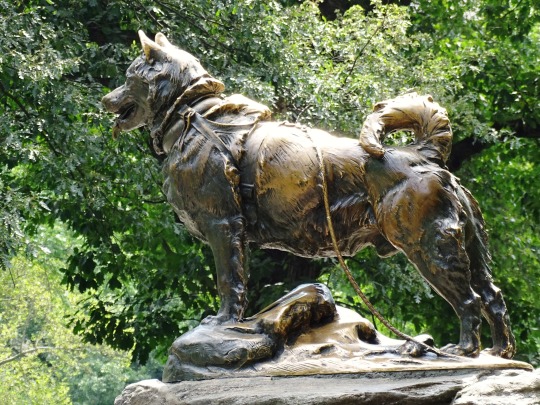


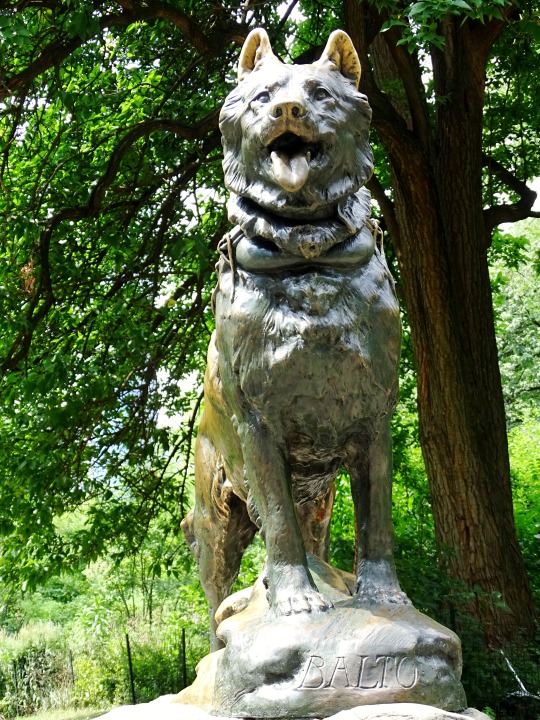





National Sled Dog Day
High-energy, furry athletes powering through snow and ice — a testament to teamwork and nature's endurance champs.
Running through snow all day, every day, pulling a sled that can weigh hundreds if not thousands of pounds—that’s a sled dog’s job. Don’t you think they might deserve a little recognition? February 2nd is the official holiday of the sled dog that we can safely say man would not have managed very well at all without.
The History of National Sled Dog Day
Sled dogs are thought to have evolved in the mountainous regions of Northern Asia over 35,000 years ago, but are thought to have started actually pulling sleds for people about 3,000 years ago, when hunting and fishing communities were forced to move further up north to Siberia. From there, they made their way to Lapland, Alaska, Canada and even Greenland. Historical references to actual dog harnesses far outdate the first European contact with the native peoples of Alaska and Canada.
In fact, it was the Alaskan gold rush that really got the American population interested in the use of sled dogs as a form of transportation, as most gold camps were only accessible by dogsled in the winter months. In fact, for a long while, dogsleds were the only relatively dependable way of transporting anything in the harsh Alaska and Yukon weather conditions, until airplanes finally took over in the 1930s. Dogsleds were also used to patrol western Alaska as late as World War II. After that, mushing became largely recreational. One of sled dogs’ most impressive achievements was the 1925 serum run from Nome to Nenana. With a diptheria threatening the lives of people in Nome and the serum needed being 1,100 kilometers (700 miles) away in the town of Nenana, hundreds of people may have died if not for the 20 dogsled teams that worked together to relay the serum to Nome. In the end, the serum reached Nome in only 6 days, saving the lives of many. Also, the first Arctic explorers were men with sled dogs.
How to celebrate National Sled Dog Day
Sled dogs are also celebrated for their role in polar expeditions, and a number of famous dog races are organised each year. National Sled Dog Day is an opportunity to raise awareness of the animals’ dedication to the human race. It can also be a time to raise money for dog charities taking care of homeless, or sick dogs, and those that have been cruelly abandoned by their owners. There are also numerous opportunities to volunteer at your local animal shelter to spend time with some of the dogs living there, play with them, or take them out for walks.
Dogs are generally social, friendly creatures that love physical activity and playing games, so even the smallest gesture on your part to celebrate National Sled Dog Day will definitely be greatly appreciated by a dog that has nothing to do but sit in a cage or pen all day, every day.
Who knows, maybe you’ll become friends and you’ll decide to adopt the dog? That would be the ultimate gesture of respect towards the sled dogs that sacrificed their health and sometimes their lives, for the good of men.
Organizations like PETA take the opportunity to point out how many dogs are being abused and mistreated in the world and encourage people to take action if they happen to witness any kind of abuse being perpetrated on man’s best friend.
PETA is also strongly opposed to the runs that take place in Alaska every year, saying they exhaust the animals for no good reason, and implore of Alaskan tourists not to patronize the Iditarod annual commemorative race, or any tourist attractions that include dogsled rides.
Source
#Whitehorse#Yukon#Balto by Frederick George Richard Roth#Stampeder Statue by Peter Lucchetti#Skagway#Central Park#New York City#USA#Canada#Seattle#Regina#RCMP Heritage Centre#Klondike Gold Rush - Seattle Unit#National Sled Dog Day#travel#original photography#vacation#tourist attraction#landmark#cityscape#architecture#NationalSledDogDay#2 February
6 notes
·
View notes
Note
so the iditarod. any fun facts?
the Iditarod Trail as we know it was originally a mail trail. in the far north, dogs have been used as freight runners since precontact times by alaska native peoples like the inupiat (in fact, the name for the "malamute" sled dog breed comes from the name for a group of the inupiat, the malemiut who lived on the seward peninsula.
as a draft animal dogs are, pound for pound, stronger and faster than horses, and in an environment like the alaskan interior a carnivore is much easier to feed than a hay-eating herbivore. they are also much better at navigating the winding, slippery, and often difficult trails -- there are places that snowmachines can't go, to this day, but dogs can. old mail trail runners would have teams of twenty or more dogs, hauling cargo like gold and mail and people through the interior. the town of iditarod itself, although now largely a ghost town, once was larger than anchorage!
the history of the iditarod race starts in the winter of 1925 when nome, a town on the icebound bering sea, suffered a diphtheria outbreak. without serum and with no way to get it there by other means -- icebound, so no boats, and the only pilot who could make the trip was on the other end of the continent -- they organized a trail relay, seven hundred miles long. it took them six days.
fifty years later, with mushing considered a dying sport, they decided to resurrect the iditarod as a race, anchorage to nome, one musher and fourteen dogs. it's about a thousand miles long -- there's two different routes, which alternate every year.
uh list of fun trivia below the cut so i don't make this TOO long
specifying the two routes thing: the routes only diverge at about the halfway point and reconnect at about the three-quarter mark, at the checkpoint right before they hit the bering sea.
trail dogs wear little booties, not because their feet get cold but to protect them from things like fallen branches, and other hazards on the trail. mushers can go through hundreds of booties in a race.
the last musher to complete the iditarod is called the "red lantern," which is a tradition that apparently started as a joke and stuck. you may have heard of musher apayauq reitan, who made history as the first out trans person to run the iditarod? she was the red lantern in 2022!
the current general frontrunners of the iditarod are father and son mitch and dallas seavey. dallas is one of two people to have won the race five times.
four people have won four times, including susan butcher, one of the first women to win.
race times can vary HUGELY depending on year and musher. the records are about eight and a half days, but it's not uncommon for people to take two weeks. libby riddles, who won in 1985, had a winning time of 18 days!
19 notes
·
View notes
Text
Wednesday 21st June 2023
As the record books will one day show, a milestone was passed with two nice sunny days in a row in Alaska. 7.30 dawned and the captain felt compelled to broadcast to the ship and anyone else who might be listening that we might consider getting up on deck fairly pronto to take a close inspection of the sort of scenery we've paid a lot of money to see. Well whilst I understand the sentiments, I do need a bit of time to fully endorse an idea like that in terms of action at that time of the morning. However, the thought persisted and sooner or later we were there on top deck in person to form our own opinion. Overnight we had travelled from Sitka and were now ploughing along at 6.7 knots along Stephen's Passage in the Juneau direction. Juneau is the capital city of Alaska and owns the title of the only US state capital that cannot be accessed by road. It can only be reached by air or sea. Originally the home of the Tlingit People, Juneau's claim to fame was that between 1882 and 1917 it operated the largest gold mine in the world. Perversely it was a Tlingit leader who led Joe Juneau to the gold deposits in 1880 and everything took off from there. Well at least for Joe Juneau it did. Not sure how well the Tlingit People did on the deal. The town today has something of a frontiers appearance which would be quite charming were it not for the suspicion that its Disney looks are there to beguile you into parting big time with your hard earned. The opportunity was there in spades for the good people of Juneau since today there were 4 cruise ships in town. Us, two Princess ships and our old friends on the Holland America. Jewellery shops abound which offer cruise ship passengers a free gift to pass their portals. The crab restaurant was able to offer crab claws at 70 dollars a pound! Whale watching tours being touted like banana sellers in the marketplace. Frankly, it was horrible and we were grateful that late afternoon was booked for a ship's excursion. We had booked to go to a dog sled and musher's camp. Now we did have doubts I confess. The possibility to score high on the naff spectrum was there in droves so it was with some trepidation that we boarded the bus to travel up the tree lined mountain. We pulled off the road and down a long gravel track and into a courtyard of open pine barns. The sound of huskies hit us immediately. This was a big operation. In all about 5 or 6 sleds were being prepared. Since the snow had gone they were wheeled platforms but each to be pulled by teams of 14 or 16 huskies. Each sled took 6 passengers plus musher and we all climbed aboard. On the command from the musher off went the dogs. 0-15 miles an hour or so instantly! Such traction! And these dogs love it. After a run around a circuit we were given a talk on dog sledding and specifically the annual race these guys get involved in; the Iditarod race which is 1000 miles through deep Alaskan snow during early March. The record time to complete is just over 8 days! After the talk we were presented with several husky puppies to admire, stroke, cuddle and thankfully hand back. The trip I think redeemed the visit to Juneau. An Asian theme to our dining experience followed. Thanks in part to Joe Juneau without whose original scam with the Tlingit people our enjoyment may not have been possible.
Tomorrow we have a day at sea to look forward to.






3 notes
·
View notes
Text
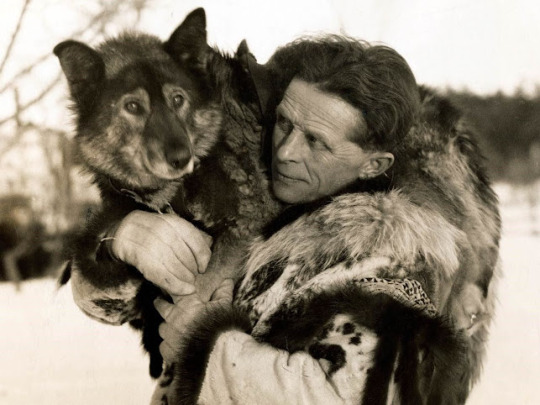
Togo, hero of the 1925 serum run to Nome, Alaska, with his owner Leonhard Seppala.
In January 1925 an outbreak of diphtheria threatened to wipeout the town of Nome, Alaska, sparking fears that an epidemic would spread and kill thousands if antitoxin medicine was not supplied. The antitoxin could only be delivered by dogsled across a portion of the Iditarod Trail, the only route accessible for transporting goods during the harsh winters. A heroic relay of dog teams transported the antitoxin across the 674 mile trail from Nenana to Nome braving gale force winds, -85 degree temperatures, and whiteout conditions across the remote Alaskan Interior. The life-saving serum was delivered to Nome in a record-breaking 127.5 hours, without a single broken vial. This came to be known as the 1925 Serum Run. Many aspects of this journey are commemorated annually in the Iditarod dog sled race.
I love Dogs. We should be more like them.
2 notes
·
View notes
Text
NYC’s Best Winter Festivals You’ve Never Heard Of

Winter in New York City often conjures images of Rockefeller Center’s towering Christmas tree, the dazzling Fifth Avenue holiday windows, and ice skaters twirling in Bryant Park. But beyond these iconic traditions lies a treasure trove of lesser-known winter festivals that sparkle just as brightly. These hidden gems celebrate the season in ways that blend art, culture, food, and community—offering locals and visitors alike a chance to experience the magic of NYC from a fresh perspective.
Here’s a roundup of NYC’s best winter festivals you’ve probably never heard of—but absolutely need to check out.
1. Winter Lantern Festival
Where: Staten Island, Queens, and Brooklyn When: November–January
The Winter Lantern Festival brings the warmth of light to NYC’s darkest months. This enchanting celebration features larger-than-life lantern displays inspired by Chinese culture. Picture shimmering dragons, glowing forests, and illuminated tunnels that transport you to a dreamlike wonderland.
Each borough's version of the festival has its own unique twist: Staten Island’s venue offers expansive outdoor displays, Queens blends traditional Chinese designs with modern art installations, and Brooklyn pairs the light show with festive food vendors.
Why Go: Perfect for families, date nights, or anyone looking to shake off winter gloom with an otherworldly glow.
2. Feast of Our Lady of Guadalupe
Where: East Harlem When: December 12
For a vibrant cultural experience, join the annual Feast of Our Lady of Guadalupe in East Harlem, a neighborhood affectionately known as El Barrio. This religious and cultural celebration honors Mexico’s patron saint with a procession of devotees, colorful costumes, and traditional music.
The festival culminates in a lively street fair, where you can sample authentic Mexican dishes, from tamales to champurrado, and witness performances of folkloric dance and mariachi music.
Why Go: A heartwarming celebration of community, faith, and tradition that feels like a slice of Mexico in the heart of NYC.
3. FrostFest at Bryant Park
Where: Bryant Park, Manhattan When: Mid-January
While Bryant Park’s Winter Village is a beloved holiday staple, FrostFest takes the post-holiday blues and turns them into an icy celebration. This week-long festival features curling tournaments, cozy igloos to rent, and themed skate nights on the park’s famous ice rink.
Special highlights include live performances, pop-up winter bars serving spiked hot chocolate, and activities for kids like snowman-making workshops.
Why Go: It’s a chance to enjoy winter fun after the holiday crowds have dissipated.
youtube
4. Boogie Down Winter Wonderland
Where: The Bronx When: December
The Bronx’s Boogie Down Winter Wonderland is a community-focused festival that celebrates the borough’s unique culture with a wintery twist. Held in Fordham Plaza, the event features live hip-hop performances, local artisan markets, and holiday-themed attractions like a tree-lighting ceremony and kids’ activities.
Visitors can enjoy traditional Puerto Rican coquito, a creamy holiday beverage, while shopping for handcrafted gifts from Bronx-based vendors.
Why Go: A vibrant mix of holiday cheer and Bronx pride, showcasing the borough’s creativity and resilience.
5. The Idiotarod NYC
Where: Various Locations When: Late January or Early February
Imagine the Alaskan Iditarod, but replace sled dogs with shopping carts and add a hefty dose of NYC absurdity. The Idiotarod is a quirky, semi-legal winter race where teams deck out shopping carts with outlandish decorations and costumes, then dash through the streets of NYC.
The route changes each year, and so do the surprises—teams must complete challenges, dodge sabotage attempts, and win over the judges with their creativity.
Why Go: It’s pure New York chaos and creativity, and a reminder that even in the coldest months, this city knows how to have fun.
6. Nordic Winter Market
Where: Industry City, Brooklyn When: Early December
For a cozy winter escape, head to Industry City’s Nordic Winter Market. This Scandinavian-inspired festival features a curated selection of artisanal goods, handmade crafts, and delicious Nordic treats like cinnamon buns and mulled wine.
Visitors can also enjoy traditional holiday performances, learn about Nordic winter traditions, and shop for unique gifts in a serene, hygge-like atmosphere.
Why Go: A charming slice of Scandinavia without leaving Brooklyn, perfect for finding unique holiday gifts.
7. Lunar New Year Festival
Where: Chinatown, Manhattan, and Flushing, Queens When: Late January or Early February
While the Lunar New Year parade in Chinatown is widely known, the surrounding festival offers even more magic for those willing to explore. Cultural institutions like the Museum of Chinese in America host workshops and performances, while local restaurants serve special menus featuring traditional New Year dishes like dumplings and sticky rice cakes.
Flushing’s celebration is equally vibrant, with colorful street fairs, lion dances, and fireworks displays lighting up the winter sky.
Why Go: It’s a cultural and culinary feast that brightens up the grayest days of winter.
8. Winter Film Awards International Film Festival
Where: Various Locations When: Late February
This indie film festival celebrates diversity and emerging talent in the heart of NYC. The Winter Film Awards showcase a range of genres, from drama to animation, with filmmakers hailing from all corners of the globe.
Beyond the screenings, the festival offers panels, networking events, and workshops, making it a great opportunity for aspiring creatives and cinephiles.
Why Go: A chance to discover the next big thing in filmmaking while escaping the cold in cozy theaters.
9. Ice Festival at Central Park
Where: Central Park, Manhattan When: February
Every February, Central Park becomes an icy wonderland for its annual Ice Festival. Professional ice sculptors transform blocks of ice into intricate designs, often inspired by the park’s history and landmarks.
The festival ends with a silent disco where revelers can dance under the winter stars while bundled in their coziest gear.
Why Go: A magical combination of art, nature, and unexpected winter fun.
Final Frosty Thoughts NYC’s winter festivals prove that the city’s energy doesn’t hibernate when the temperature drops. From glowing lanterns to quirky races and Nordic markets, there’s a celebration for every taste and interest. So, grab your warmest coat, venture beyond the tourist spots, and uncover the hidden wonders of a New York winter. Who knows? You might just find your new favorite tradition.
ChatGPT can make mistakes. Check important info.
0 notes
Text
Hi, Alaskan resident here! We have super strict rules about how to field dress animals, to dissuade people from wantonly killing animals that they think are a nuisance! So if you kill a moose, the state of Alaska has very strict regulations about how to gut it, how much meat is allowed to be left on the bone, and what to do with bones and antlers. You also can't get caught using meat for dog food cos that's considered wanton waste (which actually kind of sucks cos everyone I know with a dog team or teams is just about ready to take out a second mortgage for dog food). Look up our hunting regulations and you will find the craziest booklet of hunting regulations I have ever encountered in the US.
For obvious reasons, these regulations are translated into similar rules for the Iditarod. This situation kind of sucks cos these days most teams have a support freight dog or snow machine team that travels behind them, so there have been grumblings about letting support teams handle things like this. But TLDR: this situation sucks but they do have these rules for a reason!
Fun fact: It's so cold here in the winter that the state has a lottery you can register for and they'll call you if an animal in your area gets hit by a car or train, and you can go collect the animal to butcher it.

I love this place
#honestly love the rules#they make it super expensive and annoying to go after our big game or traphy animals#hunting here is really geared towards feeding people
21K notes
·
View notes
Text
A Day at the Sled Dog Kennel
Me with a 4-month old pup I held an Alaskan Husky pup today – one bred for sprint racing so she was slim and sleek. And I ate cold fried chicken out of a wicker picnic hamper and spit cherry pits out the window while we bumped home on a dirt road. Baker We listened to stories of the Iditarod we hadn’t already heard and pet noble dogs including the extraordinarily handsome Baker, now retired…

View On WordPress
0 notes
Photo


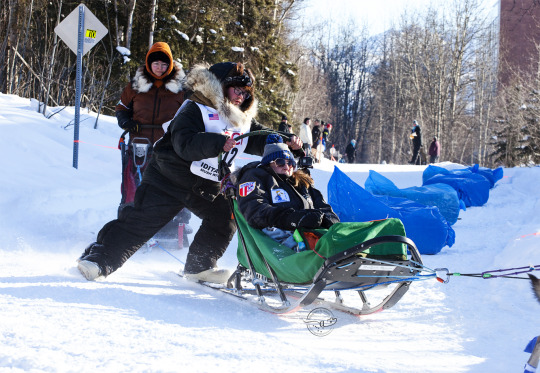
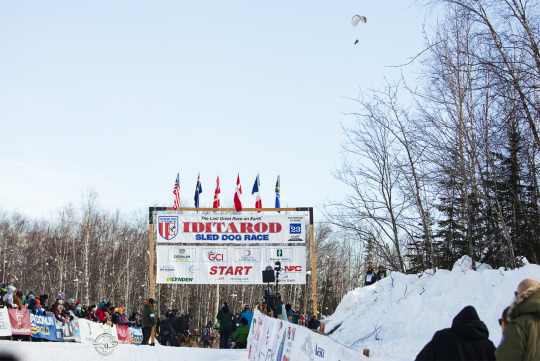
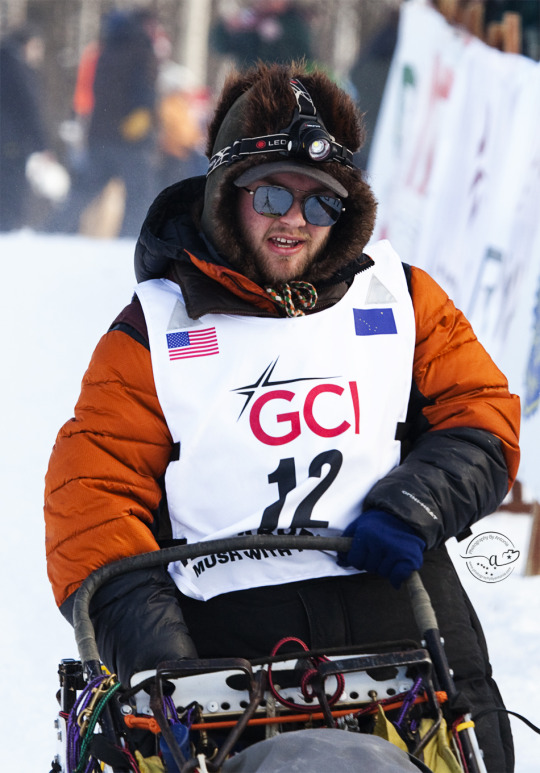
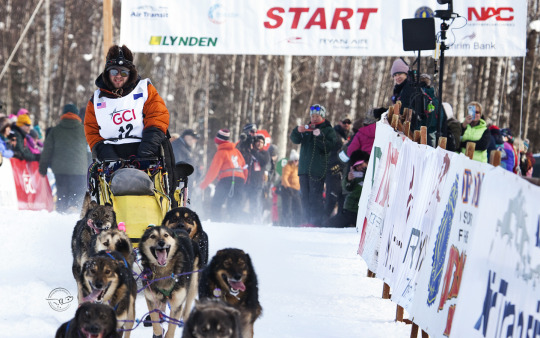
Iditarod fanboy from a very early age turned Iditarod Rookie, Hunter Keefe and team at the Ceremonial and Restart of Iditarod 51. Hunter would win the Sportsmanship award at the end of the race, voted on by his fellow mushers, for helping out his main competitor for Rookie of the Year as well as for his infectiously positive attitude during the entire race (he was singing and dancing on the back of his sled for nearly 1000 miles).
#hunter keefe#iditarod#iditarod 51#iditarod 2023#iditarod51#iditarod2023#mushing#dog mushing#dog sledding#sled dogs#alaska#alaska sports#dog sports#winter sports#sports photography#sport photography#dog photography#alaska photography#alaskan husky#huskies#mush love dogs#just mush#peta can suck it#peta is disgusting#peta kills#yes i took these pictures#photography by antonia
47 notes
·
View notes
Text
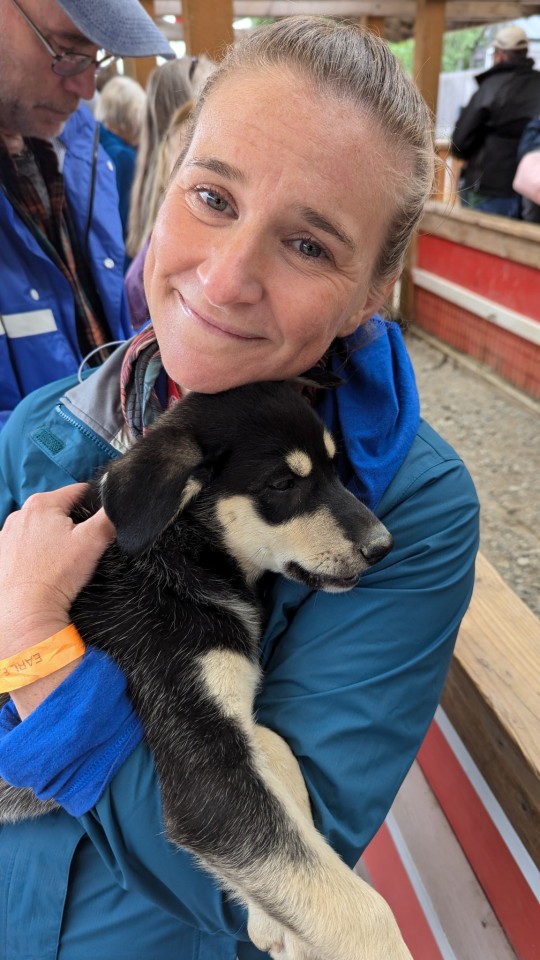
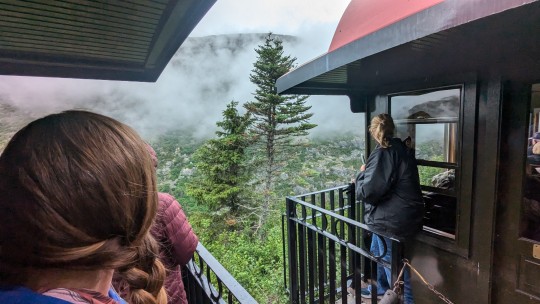
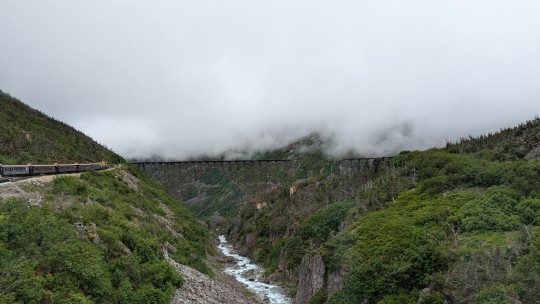
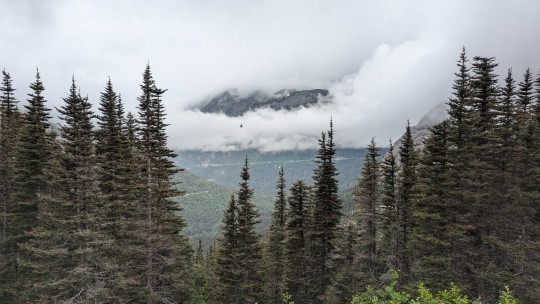
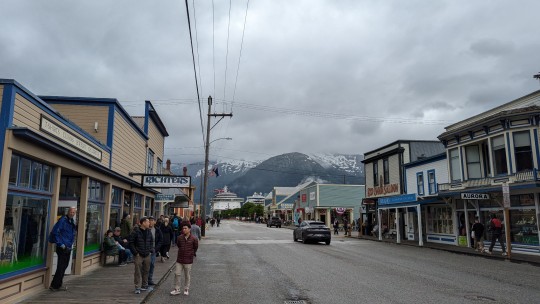

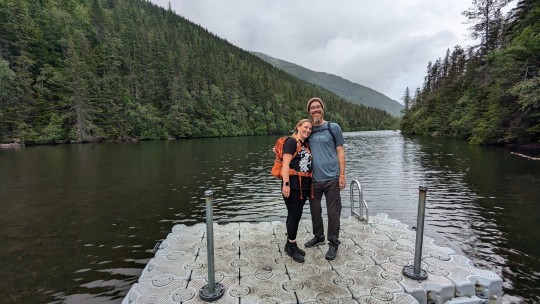
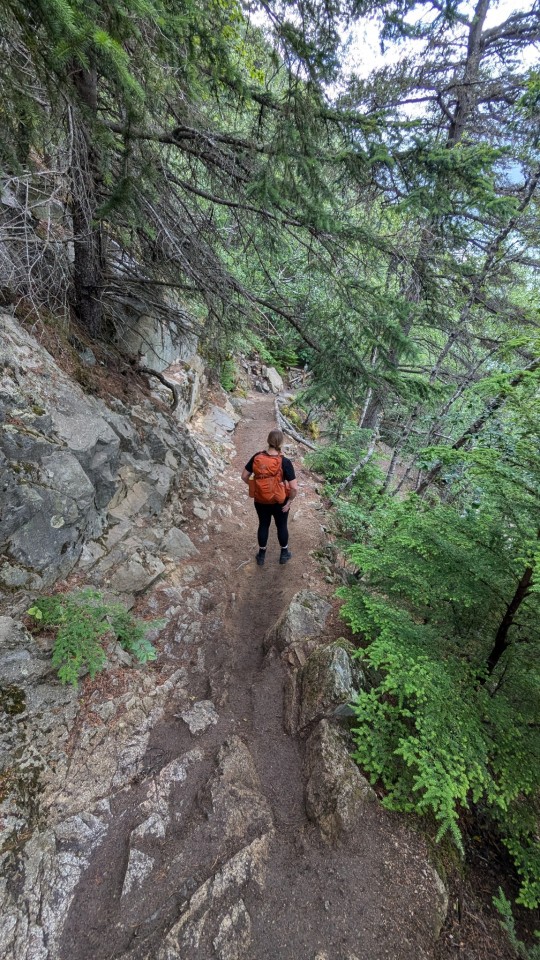

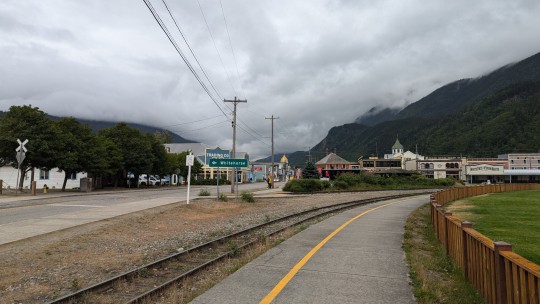
A few flashback photos from our day in Skagway! Vertical shots coming in a separate post because Instagram sucks now...
Our first "real" stop (in the sense that the boat docked and we got off and stepped onto land instead of just another boat) was in Skagway. I didn't really know anything about the town before we got there, and while I was excited to learn more and to take in the sights, I was also a little worried that this particular day's activities were going to be too tourist-y for my tastes. Especially after the previous day's eye-opening trip up the fjord, I felt like traveling around Skagway and its environs in the company of a "costumed guide" (as advertised) might feel a bit...inauthentic?
Luckily, I needn't have worried.
Now, tourism is a strange thing. The relative "authenticity" of this or that experience is something that's pretty much always on my mind to some degree when I'm traveling, whether we're talking ten-year-old me at Disney World (I was a weird kid) or forty-year-old me in the "wild" mountains, surrounded by twenty other backpackers, all of us tracking our progress on our phones in real time. In this particular case, we were in Skagway in the first place because we were on a cruise, which is a super *fun* way to experience just about anything, but rolling into town on a huge ocean liner and then getting chauffered around all day because you have money is hardly the best way to experience any place from anything approaching a local's-eye view.
That said, I've had a ruggedly romantic notion of Alaska in my mind my entire adult life, informed by obsessively reading Krakauer and other nature/adventure writers and, later, my own adventures in the mountains and on the glaciers of not-Alaska, and while I'd always known this trip, on its face, was not going to be some Artic Dreams-style struggle for survival, I'd hoped to glean some small sense of what such a thing might be like amidst and maybe in spite of the buffets and slot machines (both literal and figurative).
I'd managed this on the boat up Tracy Arm, and with a little help managed it in Skagway, too.
We learned a bunch about the history of the town and the Alaskan Gold Rush in general, as well as how to pan for gold (this part was sort-of geared more toward kids, but it was still interesting). We learned a bunch of *fascinating*, intense stuff about the Iditarod, met some sled dogs, and got to play with sled dog puppies (If I hadn't already raised my own puppy, this might have been the best moment of my life). Then we rode a train along an absolutely crazy Gold Rush-era railroad track (built for the Gold Rush but only finished after it had petered out).
The train ride, in particular, was great: I like learning stuff, and I like seeing massive mountains and valleys, *and* riding trains, so I was pretty much set. Plus, while all of the day's events were presided over by our "costumed guide," he really came into his own once we were his captive audience on board the train.
As we found out over the course of the train ride, our guide had made his way to Skagway and his employment there via a journey that had a lot in common with the Gold Rush pioneers he was being paid to teach us about. He had, apparently, taken the job somewhat spontaneously after finishing college in New York state, moving away from everything he was familiar with to this small town in Alaska that he very clearly already loved after only having lived there for a few months. His enthusiasm for, well, *everything* was contagious, and I'd be lying if I did said he didn't remind me of myself a little bit at that age, or at least the version of me that I'd tried and likely often failed to be back then. At forty-two, his excitement and earnestness were reminders that in the last twenty years I've become less adventurous and more guarded than I'd like. As the train ride finished, he took his last few minutes with us to recite a legitimately lengthy poem about the Gold Rush written by a local poet, and despite the train car being packed by a group of hungry tourists, you could have heard a pin drop when he finished.
The whole experience was inspiring enough that Lindsey and I decided to take our last bit of time in port to hike out to the edge of town and take a trail a mile and five hundred or so feet up into the mountains to the first alpine lake we could find. There, we ran into a guy who'd left his cruising family behind temporarily for a similar reason, and we all spent a few minutes talking about (you guessed it) tourism and authenticity and all of that fun stuff. Then he took our picture!
The end.
0 notes
Text
While the yearly Iditarod field of more than fifty mushers and about a thousand dogs is still largely Alaskan, competitors from fourteen countries have completed the event, including Elizabeth Windsor from Great Britain, who became the first foreign winner in 1992.
A long line of corgis walking in the snow
3K notes
·
View notes
Text
Sled dog
https://www.zillow.com/homedetails/40207-W-Krantz-Rd-Willow-AK-99688/2084117292_zpid/
https://www.natureskennel.com/sale?pgid=l6zhnqe7-30bbe2bd-09c3-45a1-a542-91346a8b0b74
0 notes
Text
The Importance of Homeschooling in Alaska
In Alaska, where the natural world is vast and can not outnumber the wonders of man-made structures, the homeschool in alaska setting is the most appealing way of education for families. Being the case in the glasses of the huge unmanifested nature, where villages could be distant and schools scattered, homeschooling presents to us the convenient and personally-tailored method of studying. Let’s take a look into the significance of homeschool in alaska Land of Gold, where ice sheets sparkle and moose walk unashamedly.
1. Tailored Education: Homeschooling allows the families in Alaska to design programs that are fit to individual situations. With a spectrum of lifestyles, from urban residents in Anchorage to bush homesteaders in the remoteness, homeschool in alaska offers the advantage of choice to the designs, programs and plans to each of his/her child.
2. Embracing Alaska’s Environment: The geographic characteristics of Alaska might pose a problem for traditional schooling, depending on harsh environmental conditions. The process of homeschooling creates an opportunity for kids to study and realize by their own means, e.g. they can discover how and where caribou migrate or they can watch the Northern Lights whilst dancing across the sky. Education acquires an ambient form, converging subjects studies with in-depth exhaustive investigation.
3. Community Connection: Alaska, despite the area size, invokes a world of its own where the people are a family. By homeschooling they demonstrate unity because the families share their resources and experience to achieve success in education. Besides group outings to local libraries and museums to collaborative learning in community centers, homeschooling ensures adequate social experience through in-depth interactions and shared learning experiences.
4. Cultural Preservation: The Alaskan State is a native land of Indigenous people who have distinct cultural makeup made of traditions, languages, and histories. The way homeschooling enables families to focus on cultural education and intermix indigenous perspectives is perhaps the most significant benefit. Cultural preservation and appreciation is achieved through different approaches, like teaching children Yup’ik dances, or studying Athabascan storytelling.
5. Flexibility for Travel: Alaska is considered a place where people travel by air, boat, or sledge dog. Homeschooling offers parents the opportunity to directly incorporate the learning experience into their traveling adventures without having to sacrifice educational progress. Whether travelling in the small villages along Iditarod Trail or going into Denali National Park directly, homeschooling is an ideal setting for learning and travel where the two are very well connected.
6. Individualized Attention: Since the classes are smaller and have one-on-one instruction, this enables homeschooling in alaska which guarantees that each child is given individual learning that suits their style and pace. Even if a child gets by at maths or happens to be weak at science, homeschooling provides parents with the opportunity to modify the method of teaching suited to that child, encouraging a sense of academic confidence and a love for learning.
Homeschooling in alaska has a major contribution to the advancement of education in Alaska as it encourages families to take their education beyond the limiting structures of a traditional school This variety, pliability and cultural preservation is what makes homeschooling in Alaska the right pathway to academic splendor amidst the majestic Alaskan scenery.
0 notes
Text
Fort Worth veterinarian shares details of Iditarod experience – NBC 5 Dallas-Fort Worth
New Post has been published on https://petn.ws/KI5gJ
Fort Worth veterinarian shares details of Iditarod experience – NBC 5 Dallas-Fort Worth
A Fort Worth veterinarian is coming back home from the experience of a lifetime – working the famous Iditarod sled dog race in Alaska. Dr. Russell Miller shared photos and stories from his work as a canine physician on the 1,000-mile Alaskan trail this month as teams traveled across the state. The Iditarod Trail Sled […]
See full article at https://petn.ws/KI5gJ #DogNews #Alaska, #FortWorth, #SomethingGood
0 notes
Text
Wait, hold on, why did I learn about the Iditarod in school? I think it was on the curriculum multiple times. Is it because it's the best "current events" link to Jack London and other Alaskan Gold Rush literature?
"because it's cool-" you're not helping.
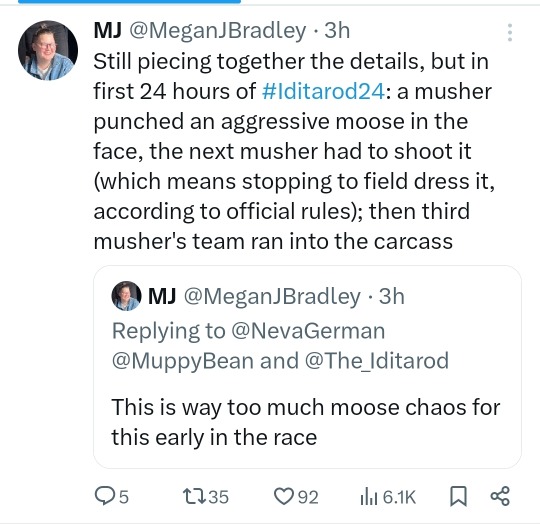
FUCKING HELLO?
- jessie holmes (current race leader as of now, 3:37 pm EST, first out of Rainy Pass) punched a moose in the face
- dallas seavey, previous 6x champion (currently in 3rd and in Rainy Pass checkpoint) killed the moose and, per rules, had to field dress it
- paige drobney (currently 4th, somewhere between Finger Lake and Rainy Pass) then later RAN OVER THE MOOSE WITH HER TEAM
3K notes
·
View notes